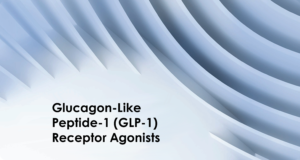The competitive landscape for GLP-1 receptor agonists, particularly in obesity and diabetes treatment, is undergoing a transformation. Novo Nordisk and Eli Lilly, long-time leaders in this space, face challenges not only from emerging pharmaceutical competitors but also from specialty compounding pharmacies. These pharmacies, by creating compounded versions of semaglutide and other GLP-1 receptor agonists, are reshaping the way patients access and utilize these critical medications.
Novo Nordisk and Eli Lilly: Market Leaders Facing New Pressures
Novo Nordisk’s Ozempic and Wegovy, along with Eli Lilly’s Mounjaro (tirzepatide) and Zepbound, have set the gold standard in GLP-1 therapies. Originally developed to manage type 2 diabetes, these drugs have shown remarkable efficacy in promoting weight loss, positioning them as key treatments for obesity. Both companies benefit from their first-mover advantage, capturing a significant portion of the growing $200 billion GLP-1 market.
However, the high costs of branded versions of semaglutide and periodic shortages have driven many patients to seek alternatives, particularly from compounding pharmacies. These pharmacies offer customized versions of drugs like semaglutide, tailored to individual needs in terms of dosage, ingredients, and even delivery methods. By personalizing treatment plans, compounding pharmacies are able to serve patients who may be priced out of or dissatisfied with standard branded options, further intensifying competition in the market.
The Rise of Compounding Pharmacies
The increasing availability of compounded semaglutide from specialty pharmacies is revolutionizing patient access to GLP-1 therapies. Unlike mass-produced branded drugs, compounded medications are customized to fit the specific needs of patients, offering flexible dosing options, adding ingredients to minimize side effects, and providing alternative delivery methods. This is particularly beneficial for patients who may not tolerate the standard dose or who prefer a more personalized treatment plan.
This rise in compounding semaglutide offers significant affordability advantages for many patients, especially as the costs of branded drugs continue to climb. Given that GLP-1 therapies are expected to become more widely prescribed for weight loss, the need for more affordable, customizable options is growing. Despite this, the expansion of compounded alternatives raises concerns about consistency, quality control, and the regulatory oversight of these customized medications. Compounding pharmacies, while providing crucial access to these therapies, do not always adhere to the same stringent regulations as FDA-approved drugs, raising potential issues regarding safety and efficacy.
Regulatory Challenges and Industry Innovation
As the popularity of compounded alternatives grows, pharmaceutical giants like Novo Nordisk and Eli Lilly are not sitting idly by. These companies are defending their market share by continually innovating their product lines, improving efficacy and convenience, and enhancing patient experience. For example, Eli Lilly has introduced self-injectable GLP-1 options like Zepbound, which allow patients to administer their treatments at home. Novo Nordisk has similarly leaned into convenience, making self-administered injections central to its product offering with Wegovy and Ozempic.
Looking ahead, both companies are rolling out next-generation therapies designed to surpass their current offerings. Novo Nordisk’s cagrisema and Eli Lilly’s orforglipron (an oral semaglutide alternative) are expected to launch by 2026, aiming to improve both efficacy and patient convenience. These new treatments, including multi-mechanism drugs like Eli Lilly’s retatrutide, have the potential to set new benchmarks for GLP-1 therapy by combining multiple benefits into a single treatment.
However, compounding pharmacies remain a force to be reckoned with, as they offer an attractive alternative for patients who prioritize affordability and personalization. This parallel market allows patients with complex conditions or sensitivities to standard doses to receive treatments better suited to their specific needs.
Market Dynamics: A Tension Between Customization and Standardization
As Novo Nordisk and Eli Lilly race to enhance their offerings, compounding pharmacies continue to thrive on providing more customizable, cost-effective options. This dynamic presents both challenges and opportunities for patients and healthcare providers, as they must navigate the trade-offs between the affordability and flexibility of compounded medications versus the reliability and regulatory oversight of branded drugs.
Moreover, the entry of new competitors into the GLP-1 market, such as Roche, Pfizer, and Viking Therapeutics, further complicates the competitive landscape. By 2029, as many as 16 new GLP-1-based drugs could enter the market, potentially capturing $70 billion in market share. These entrants will not only push the boundaries of innovation but also put pricing pressure on existing therapies, forcing pharmaceutical companies to lower costs or improve the value proposition of their branded drugs.
Conclusion: A Win-Win for Patients
The competition between big pharmaceutical companies and compounding pharmacies is intensifying as demand for GLP-1 therapies grows. While Novo Nordisk and Eli Lilly continue to push the boundaries of innovation with new drugs and delivery methods, compounding pharmacies are capitalizing on customization and cost-efficiency to provide personalized alternatives to patients. This tension between the two sectors ultimately benefits patients by offering a broader range of treatment options, improved accessibility, and potential cost reductions.
As the obesity and diabetes treatment landscape continues to evolve, both big pharma and compounding pharmacies will need to innovate continually to meet the diverse needs of their patients. Whether through cutting-edge branded drugs or personalized compounded medications, the future of GLP-1 therapy is one of increasing choice, competition, and, ultimately, better outcomes for those seeking help in managing these chronic conditions.
This Post Was Written By:
Alper Ozdemir, PharmD Candidate 2025





